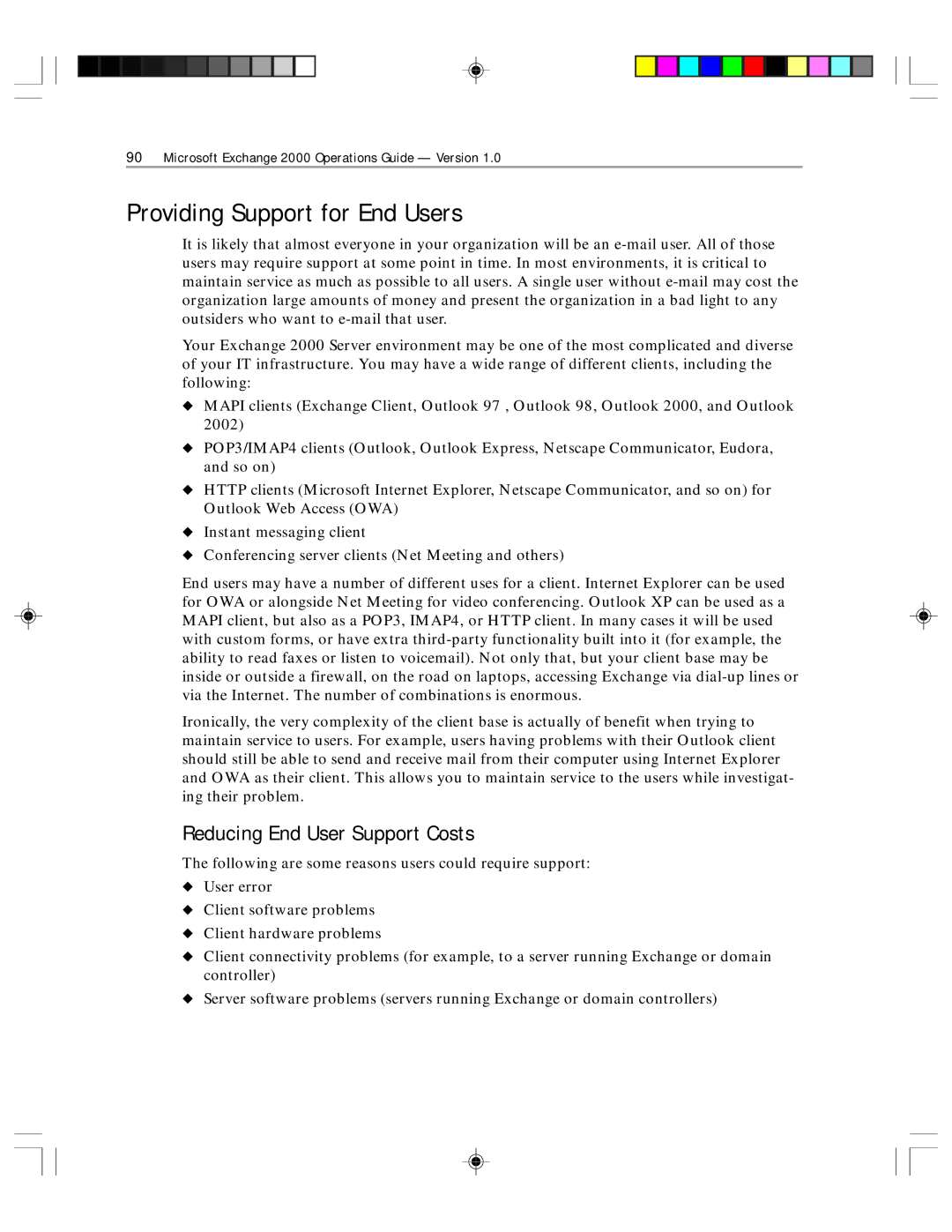
90Microsoft Exchange 2000 Operations Guide — Version 1.0
Providing Support for End Users
It is likely that almost everyone in your organization will be an
Your Exchange 2000 Server environment may be one of the most complicated and diverse of your IT infrastructure. You may have a wide range of different clients, including the following:
◆MAPI clients (Exchange Client, Outlook 97 , Outlook 98, Outlook 2000, and Outlook 2002)
◆POP3/IMAP4 clients (Outlook, Outlook Express, Netscape Communicator, Eudora, and so on)
◆HTTP clients (Microsoft Internet Explorer, Netscape Communicator, and so on) for Outlook Web Access (OWA)
◆Instant messaging client
◆Conferencing server clients (Net Meeting and others)
End users may have a number of different uses for a client. Internet Explorer can be used for OWA or alongside Net Meeting for video conferencing. Outlook XP can be used as a MAPI client, but also as a POP3, IMAP4, or HTTP client. In many cases it will be used with custom forms, or have extra
Ironically, the very complexity of the client base is actually of benefit when trying to maintain service to users. For example, users having problems with their Outlook client should still be able to send and receive mail from their computer using Internet Explorer and OWA as their client. This allows you to maintain service to the users while investigat- ing their problem.
Reducing End User Support Costs
The following are some reasons users could require support:
◆User error
◆Client software problems
◆Client hardware problems
◆Client connectivity problems (for example, to a server running Exchange or domain controller)
◆Server software problems (servers running Exchange or domain controllers)
